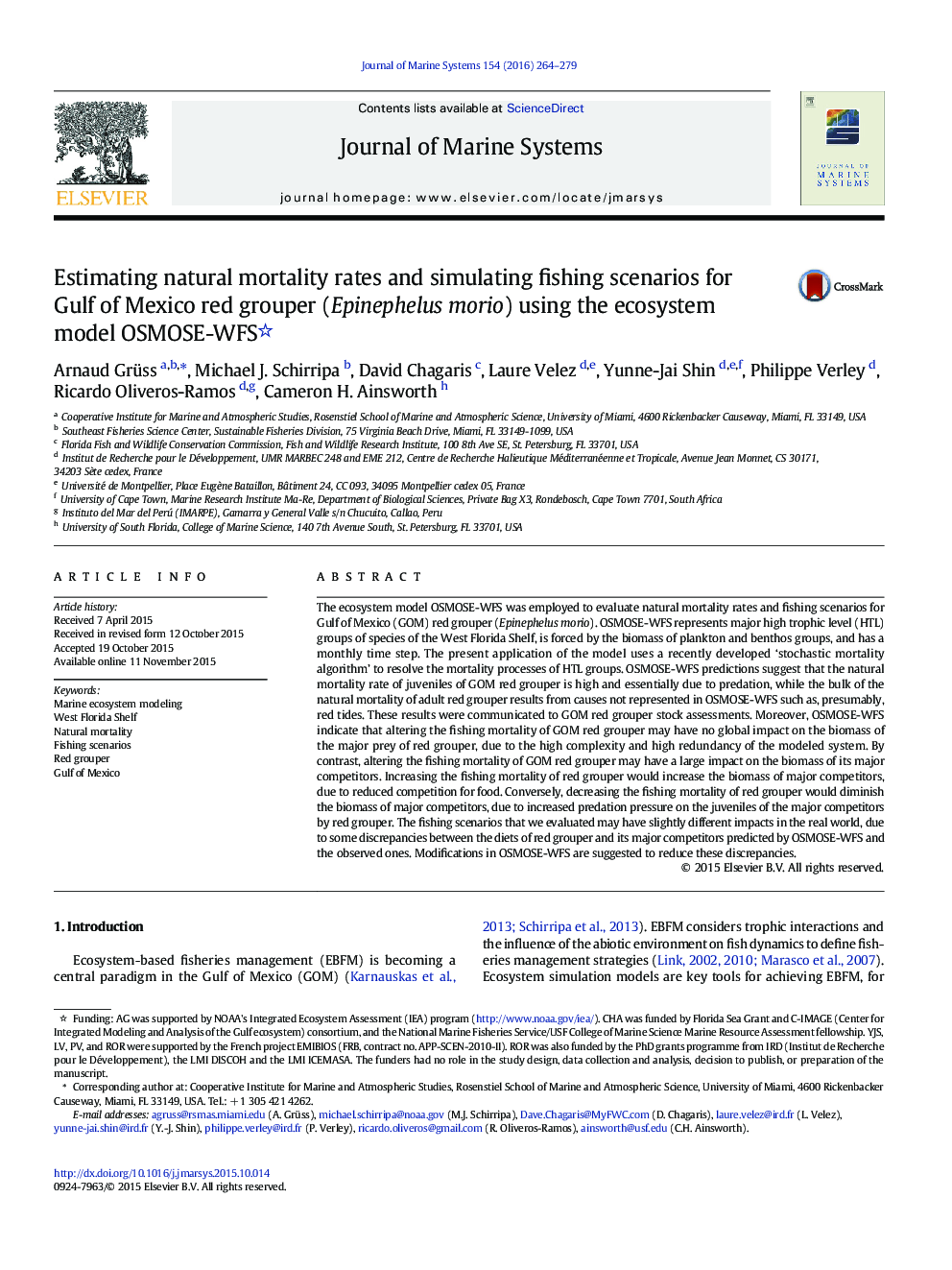| کد مقاله | کد نشریه | سال انتشار | مقاله انگلیسی | نسخه تمام متن |
|---|---|---|---|---|
| 6386670 | 1327843 | 2016 | 16 صفحه PDF | دانلود رایگان |

- The ecosystem model OSMOSE-WFS is used to estimate red grouper natural mortalities.
- The impacts of fishing scenarios for red grouper are also evaluated with the model.
- Underexploiting or overfishing red grouper does not affect its major prey.
- Fishing scenarios have large impacts on major competitors of red grouper.
The ecosystem model OSMOSE-WFS was employed to evaluate natural mortality rates and fishing scenarios for Gulf of Mexico (GOM) red grouper (Epinephelus morio). OSMOSE-WFS represents major high trophic level (HTL) groups of species of the West Florida Shelf, is forced by the biomass of plankton and benthos groups, and has a monthly time step. The present application of the model uses a recently developed 'stochastic mortality algorithm' to resolve the mortality processes of HTL groups. OSMOSE-WFS predictions suggest that the natural mortality rate of juveniles of GOM red grouper is high and essentially due to predation, while the bulk of the natural mortality of adult red grouper results from causes not represented in OSMOSE-WFS such as, presumably, red tides. These results were communicated to GOM red grouper stock assessments. Moreover, OSMOSE-WFS indicate that altering the fishing mortality of GOM red grouper may have no global impact on the biomass of the major prey of red grouper, due to the high complexity and high redundancy of the modeled system. By contrast, altering the fishing mortality of GOM red grouper may have a large impact on the biomass of its major competitors. Increasing the fishing mortality of red grouper would increase the biomass of major competitors, due to reduced competition for food. Conversely, decreasing the fishing mortality of red grouper would diminish the biomass of major competitors, due to increased predation pressure on the juveniles of the major competitors by red grouper. The fishing scenarios that we evaluated may have slightly different impacts in the real world, due to some discrepancies between the diets of red grouper and its major competitors predicted by OSMOSE-WFS and the observed ones. Modifications in OSMOSE-WFS are suggested to reduce these discrepancies.
Journal: Journal of Marine Systems - Volume 154, Part B, February 2016, Pages 264-279